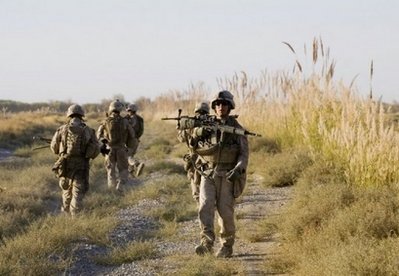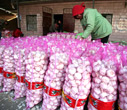Asia-Pacific
US Marines launch large offensive in Afghanistan
(Agencies)
Updated: 2009-12-05 01:25
KABUL: US Marines and Afghan troops on Friday launched the first offensive since President Barack Obama announced an American troop surge, striking against Taliban communications and supply lines in a southern insurgent stronghold, a military spokesman said.
|
 US Marines return to their base in Helmand Province. Top US officials defended Barack Obama's new strategy to win the Afghan war, denying that a timeline for departure was set in stone as NATO met Thursday to consider his call for more troops.[Agencies]
|
| ||||
The official, who spoke on condition of anonymity because he was not authorized to detail the operation, said that Ospreys have previously been used for intelligence and patrol operations.
A second, larger force pushed northward from the Marines' Forward Operating Base in the town of Now Zad, Pelletier said. Combat engineers were forcing a corridor through Taliban minefields with armored steamrollers and explosives, Pelletier said.
In all, about 1,000 Marines as well as Afghan troops were taking part in the operation, known as "Cobra's Anger," he said.
There were no reports of NATO casualties. The spokesman for the Afghan governor of Helmand province, Daood Ahmadi, said the bodies of four slain Taliban had been recovered. Ahmadi said 150 Afghan troops were taking part in the operation, which had located more than 300 mines and roadside bombs by Friday evening.
The operation began three days after Obama announced that he was sending 30,000 reinforcements to Afghanistan to help turn the tide against the Taliban. America's European allies will send an estimated 7,000 more troops to Afghanistan next year "with more to come," NATO chief Anders Fogh Rasmussen announced Friday.
The new offensive aims to cut off the Taliban communication routes through Helmand and disrupt their supply lines, especially those providing explosives for the numerous lethal roadside bombs, or improvised explosive devices, that litter the area, known by Marines as "IED Alley."
Pelletier said several arms caches and at least 400 pounds of explosive materials had been found so far Friday.
"Right now, the enemy is confused and disorganized," Pelletier said by telephone from Camp Leatherneck, the main Marines base in Helmand. "They're fighting, but not too effectively."
Pelletier said insurgents were caught off guard by the early morning air assault.
Now Zad used to be one of the largest towns in Helmand province, the center of Afghanistan's lucrative opium poppy growing industry.
However, three years of fighting have chased away Now Zad's 30,000 inhabitants, leaving the once-thriving market and commercial area a ghost town.
In August, the Marines launched their first large-scale offensive in the barren, wind-swept and opium-poppy growing valley surrounded by steep cliffs with dozens of caves providing cover to Taliban units.
More than 100 hardline insurgents are believed to operate in the area, their positions so solid that a fixed frontline runs just a few hundred yards (meters) north of the Marines' base, according reporters who were with the Marines there last summer.











